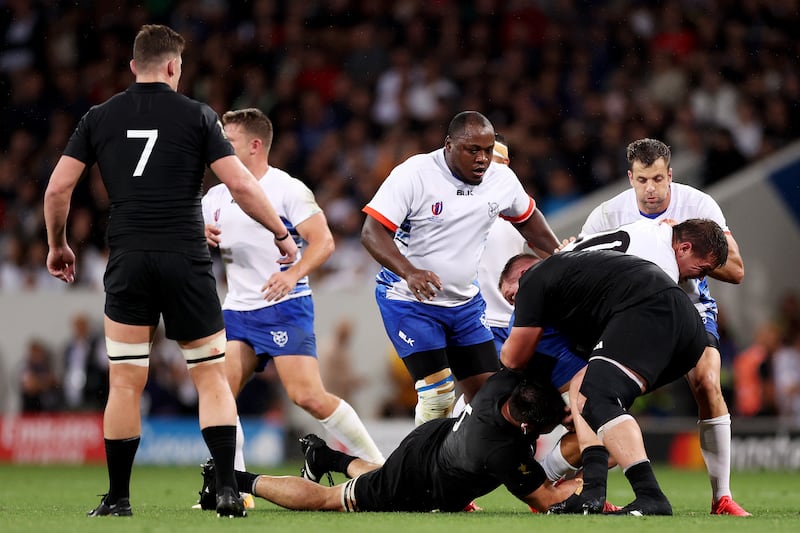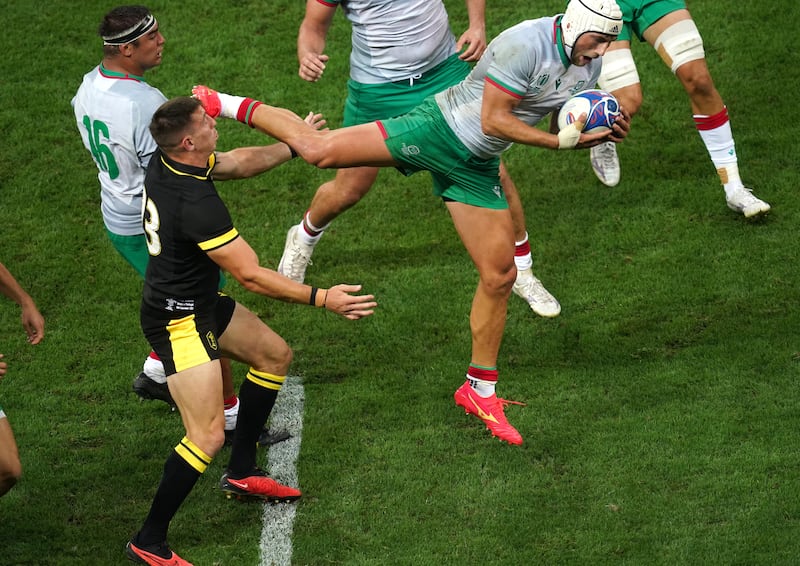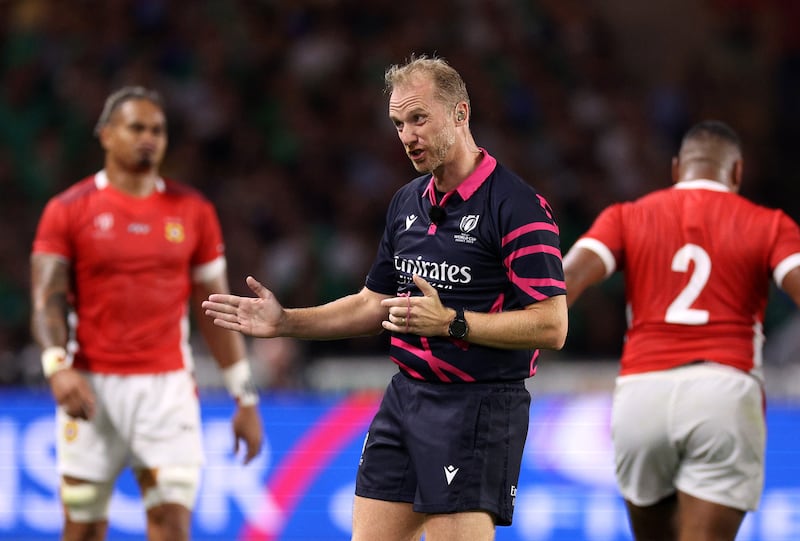The bunker: a good idea, or maybe it’s simply “la grande folie”?
The inconsistencies coming out of the bunker foul play system are risking chaos. It’s already clear enough that World Rugby has erred in introducing the system so quickly, after just limited trials during the summer. However, the world revolves around the awkward man, and the Southern Hemisphere pushed hard for its introduction and, not unusually, got its way.
France v Uruguay was a terrific match, with the comparative minnows looking capable of pulling off a victory of seismic proportions. Whether or not they would have succeeded if France had been reduced to 14 will never be known, the bunker deeming that Romain Taofifénua did not deserve a red card for his hit on Uruguay’s Santiago Arata.
Here’s what happened. Arata was falling, as another French player, Sekou Macalou, tackled him legitimately. Fully aware of what was happening, Taofifénua lowered his own body height, and, failing to wrap, crashed into Arata’s head. The Frenchman’s hit was always illegal, and that means no mitigation. But he got it, with Macalou’s involvement being the invalid rationale for not upgrading to red.
An identikit hit by New Zealander Ethan de Groot, on the other hand, was upgraded in their match against Namibia. And we’ve seen England’s Tom Curry getting red and a suspension, while two very similar offences stayed at yellow. Confusion, not consistency, reigns.

Then we saw Portugal’s Vincent Pinto, while catching the ball, strike the arriving Josh Adams in the face with his studs. Pinto may well have been trying to rebalance himself; he was certainly looking in the opposite direction. Maybe there was a bit of bad luck involved, but he couldn’t have expected any other decision than the red card. Indeed, referee Karl Dickson could have given it himself but, as we suspected, that is now never going to happen.
It seems somewhat absurd that the most qualified person to make the decision, the referee – in conjunction with his TMO and assistants – is no longer involved, and is clearly more than content to pass the buck to the bunker. There we find officials who, through no fault of their own, have very limited experience in making such critical calls, hence the inconsistency, the incoherence.
And who precisely are the people in the bunker? Sorry, but I can only tell you that they’re from the TMO group; otherwise, like the scarlet pimpernel, they remain anonymous. Of course, those in the know do know the names, but these appointments are not announced. That’s hardly transparency.

But it’s all not the fault of the match officials; the blame lies firmly with World Rugby, which agreed to rush the deployment of the bunker in the first place. The World Cup is not the place to experiment – this needed a significantly longer trial period, at least a full season, to iron out the creases before arriving at the game’s greatest event. The result, so far, is indeed “la grande folie”.
While Tonga presented the expected physical challenge, it wasn’t maintained, with Ireland being extremely good. They could hardly be in better nick for what’s fast coming down the track in the shape of South Africa; however, the potential loss of prop Finlay Bealham, on top of the already-missing Cian Healy, would be a blow.
[ Rugby World Cup viewers should prepare to tackle The BunkerOpens in new window ]
Chapeau to record points-scorer captain Johnny Sexton, and what a way to do it. Not with a mundane penalty, but dotting down for a well-worked try in the shadow of the Tongan posts. Someday, deep into the future, someone may usurp his tally, but there’ll be long odds on it ever happening.
Wayne Barnes produced his best performance for a long time. This was not the annoyingly over-talkative version, rather it was considered, accurate refereeing, combined with a high work rate, particularly at the breakdown and in-goal, the latter highly unusual for him. Naturally, Barnes is targeting the final, and, if he can maintain this form for the duration of the tournament, then he’ll be hard to stop.

His performance completely outshone that of another final hopeful, New Zealand’s Ben O’Keeffe, who disappointed in the aforementioned France v Uruguay match. I stopped counting the number of scrum penalties when it reached 10, and yet, no card. O’Keeffe’s demeanour was over-friendly, and his monotone communication came across as justification, and a needless willingness to debate.
Getting players to change behaviour needs a lot less communication, but much more firmly – even tersely – delivered. There’s nothing wrong with letting players know your patience has run out; in fact, it’s a smart idea.
Ireland’s Andy Brace was in charge for a Saint-Étienne cliffhanger, as the flying Fijians claimed Australia’s scalp; and, fortunately, lady luck smiled on the referee in terms of the result. Early on, just a tad fast on the whistle, he denied Fiji a clear advantage – it was a try-scoring opportunity. Then there was Australian handling on the ground before they took a quick lineout throw, crossing for a try of their own. But these, while important learnings for Brace, had no impact on the result. The best team won, ill-disciplined Australia were well beaten; even Eddie Jones agrees.
Next stop, the Stade de France. Ireland v South Africa will be one hell of a belter, with Ben O’Keeffe having the responsibility of bringing this match home without controversy. Let’s wish him well, and just hope it’s not decided by the bunker. Please, oh ye gods of rugby, do not let that happen.






